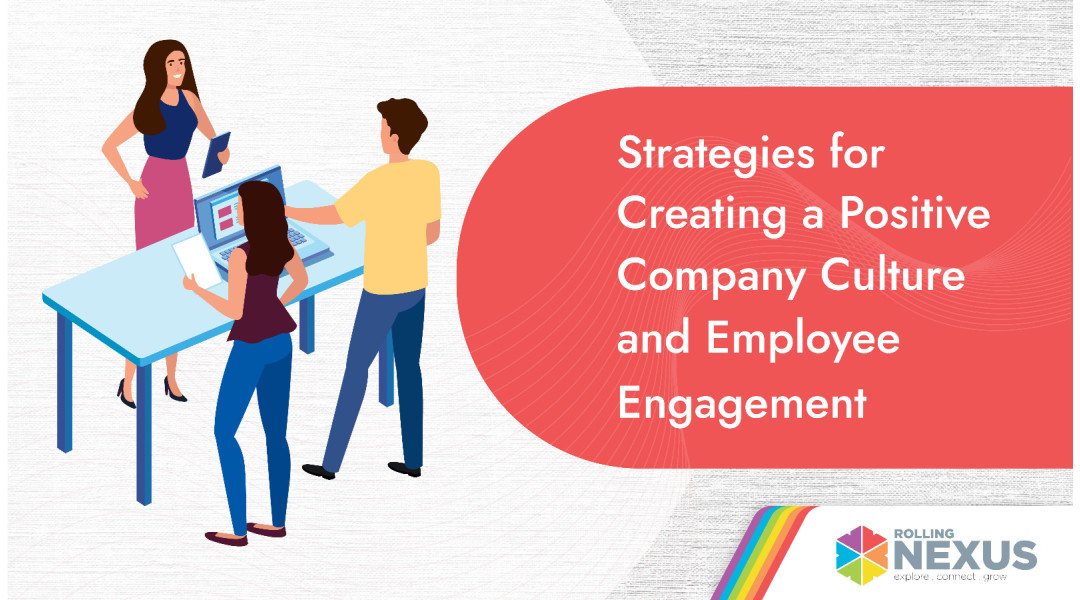

“Talent is the multiplier. The more energy and attention you invest in it, the greater the yield.” Marcus Buckingham, Author and business consultant quoted this.
An organization’s sustainability is determined by its strong foundation i.e. the human resources. Besides, technological equipment, and expensive materials in the organization to operate its core activities, human resources are the ones who are the drivers of such non-human resources. And without the deeper commitment of human resources towards the organization, the organization’s doors are to be closed soon. Amongst the various elements that drive the employees of an organization, company or work culture and employee engagement are two of the factors that employees consider for learning and growth. There are many things to be discussed under these topics.
Before diving into the main topic, let’s hop into the terms- Work/Company Culture and Employee Engagement.
Work or Company culture: As the word suggests, company culture represents the united values, beliefs, objectives, and attitudes that act as a roadmap for the organization. The company culture drives the employees to be resilient or vulnerable. It suggests the employees embrace the behaviors, attitudes, and matters of the organization and guides what terms and conditions are the segments of the company's customary DNA.
Employee Engagement: Employee Engagement is more than an employee clocking in and clocking out or waiting for paychecks only. It is the degree to which an employee feels motivated about his/her work. The passion and interest of the employees towards his/her work reflects employee engagement.
Essence of Positive and HealthyWork/Company Culture
In a workplace full of stress, discrimination, and an unparalleled environment, an employee can’t sustain and the employee turnover may increase drastically which negatively impacts the organizational brand and performance. An ideal workplace is a compilation of these adjectives:
An ideal workplace is considered to be healthy and productive when the employees of the organization feel respected when they see learning and professional development opportunities in the organization when their actions align with the core values of the organization and when they receive benefits, perks, and incentives from the organization. Job security and expectation of supportive leadership are what the employees feel are the elements of a good workplace culture.
When the greatest pandemic hit the globe, COVID-19 made the work stumble upon various challenges, and along with the challenges, remote working, digitization, online payments, and The Great Resignation term also sparked well. Employees tend to look for new jobs if they feel dissatisfied with the organization. Hence to overcome the staggering employee turnover, the organization needs to establish a good workplace culture. A strong workplace culture boosts productivity and ameliorates employee engagement and engaged employees deliver better performance and their existence may be quite long. Hence, the organization needs to reckon with this driver for the employees’ sustainability in the organization.
What are the strategies for creating a positive company culture?
Leaders and managers are not only responsible for shaping the culture of the organization. Individual contributions are also of the utmost importance for creating a positive company culture.
Employees’ engagement is more than having job satisfaction it relates to the individuals’ connection to the organization. If employees feel connected to the organization, they perform their best in the organization. Employees must feel committed to the organization and feel satisfied with the job. Waiting a month for salary updates in bank accounts should not be the only expectation of the employees. They should feel energized to do the work.
Employee engagement checklist may include the following strategies:
The strategies for creating a positive company culture and employee engagement are somewhat aligned with one another. Leaders, managers, and individual contributors should work together and invest in the initiatives to create a positive company culture. The contribution of each individual in the organization are must in shaping the overall culture and environment of the organization.